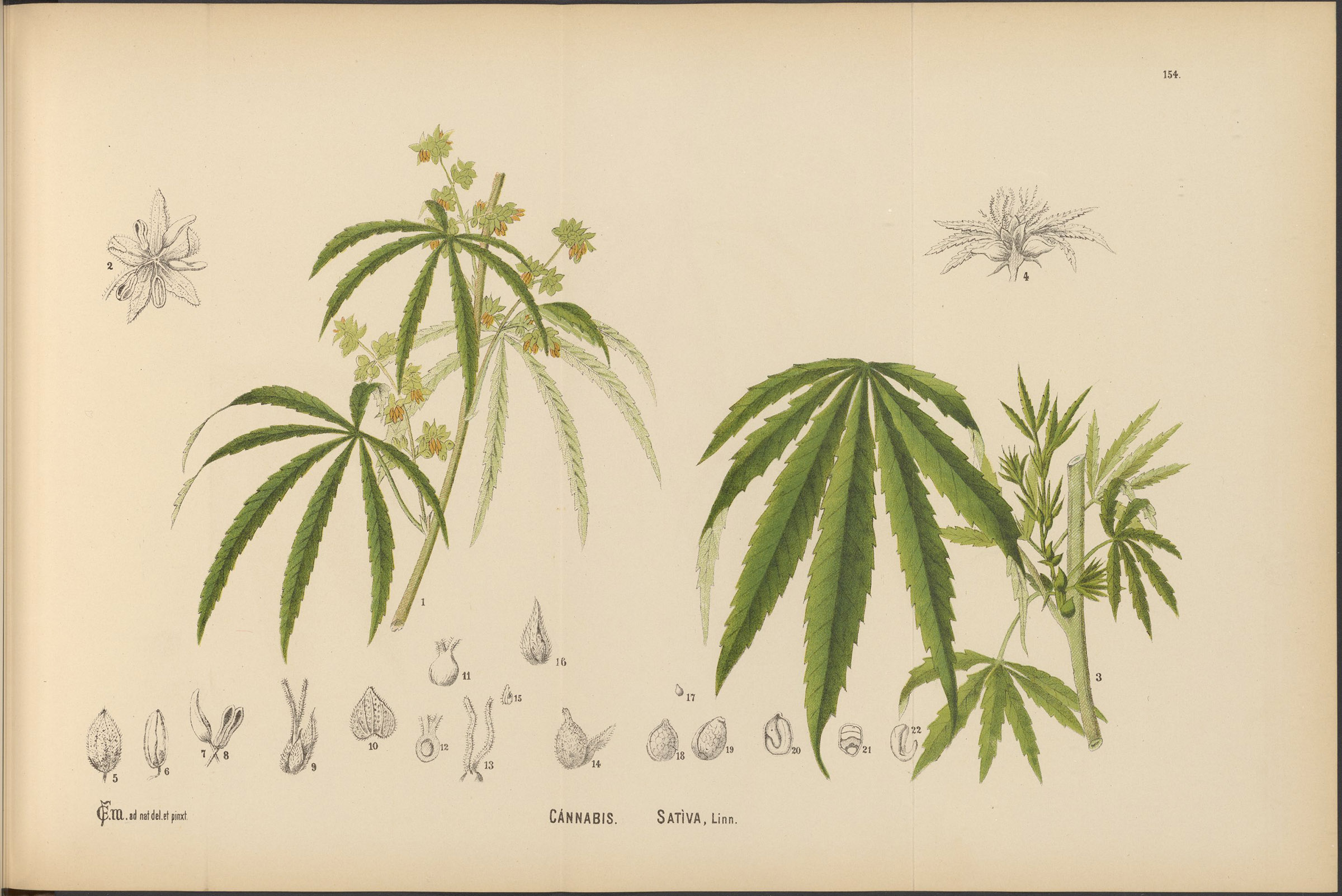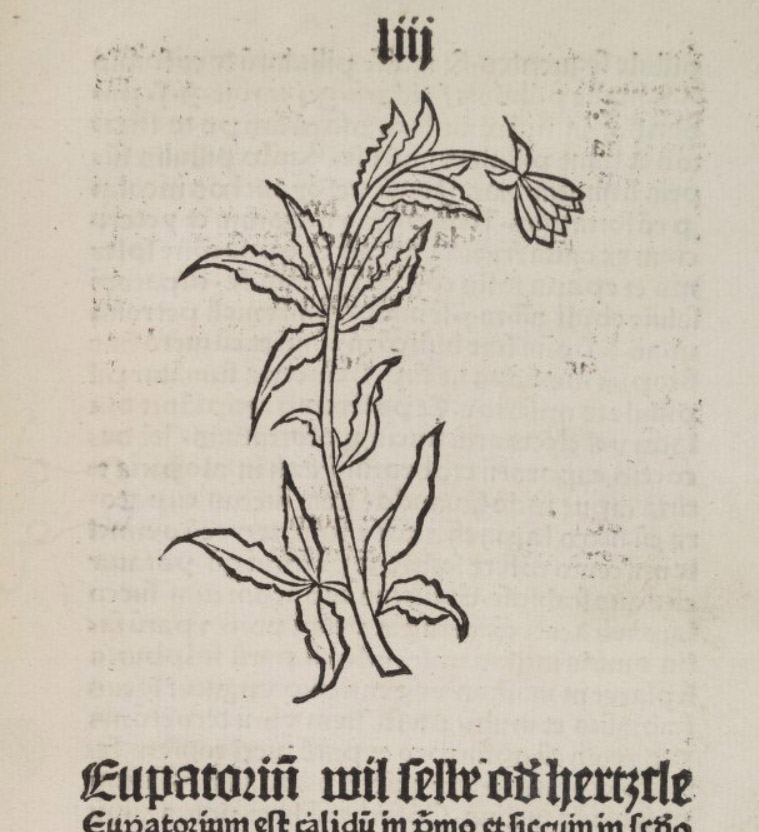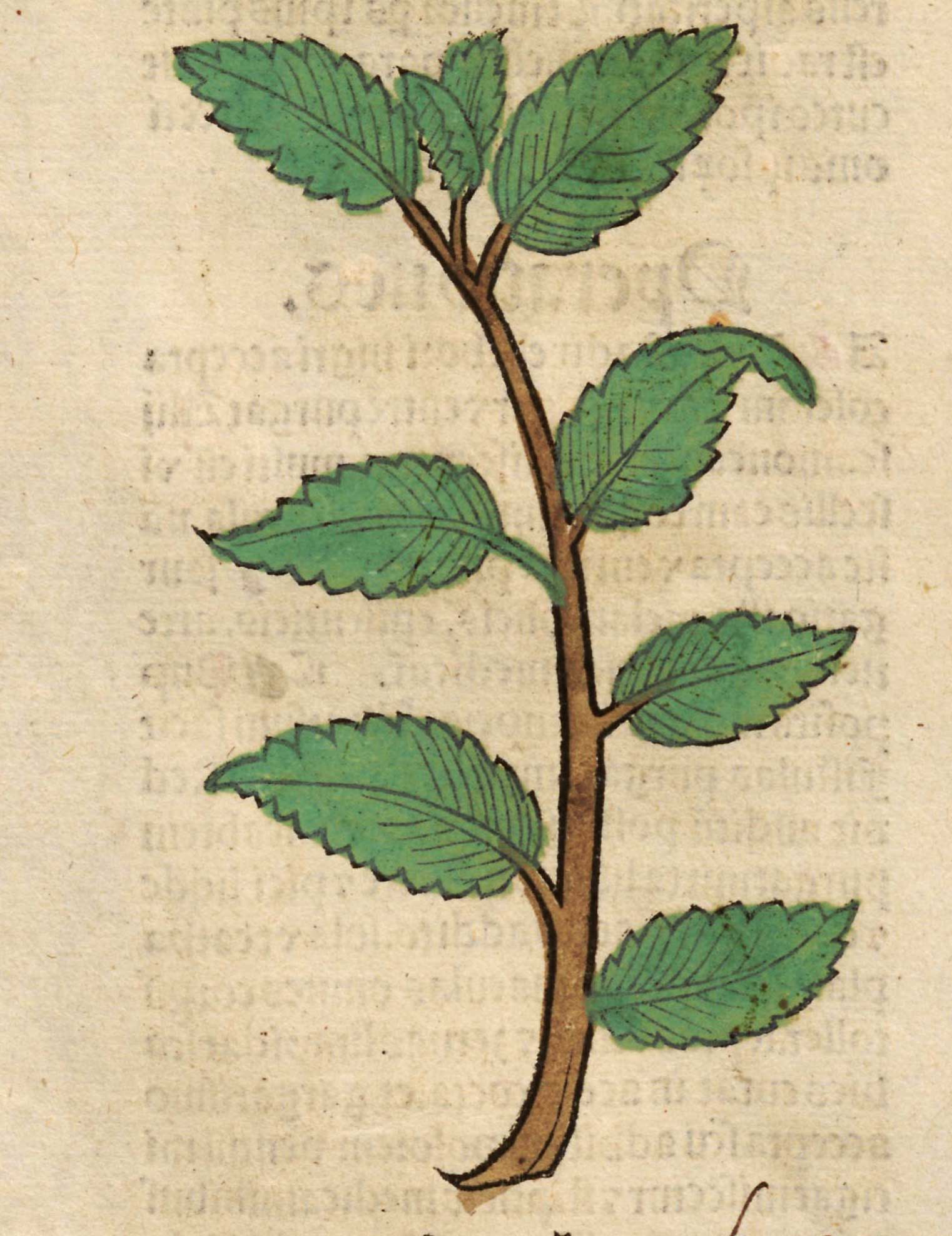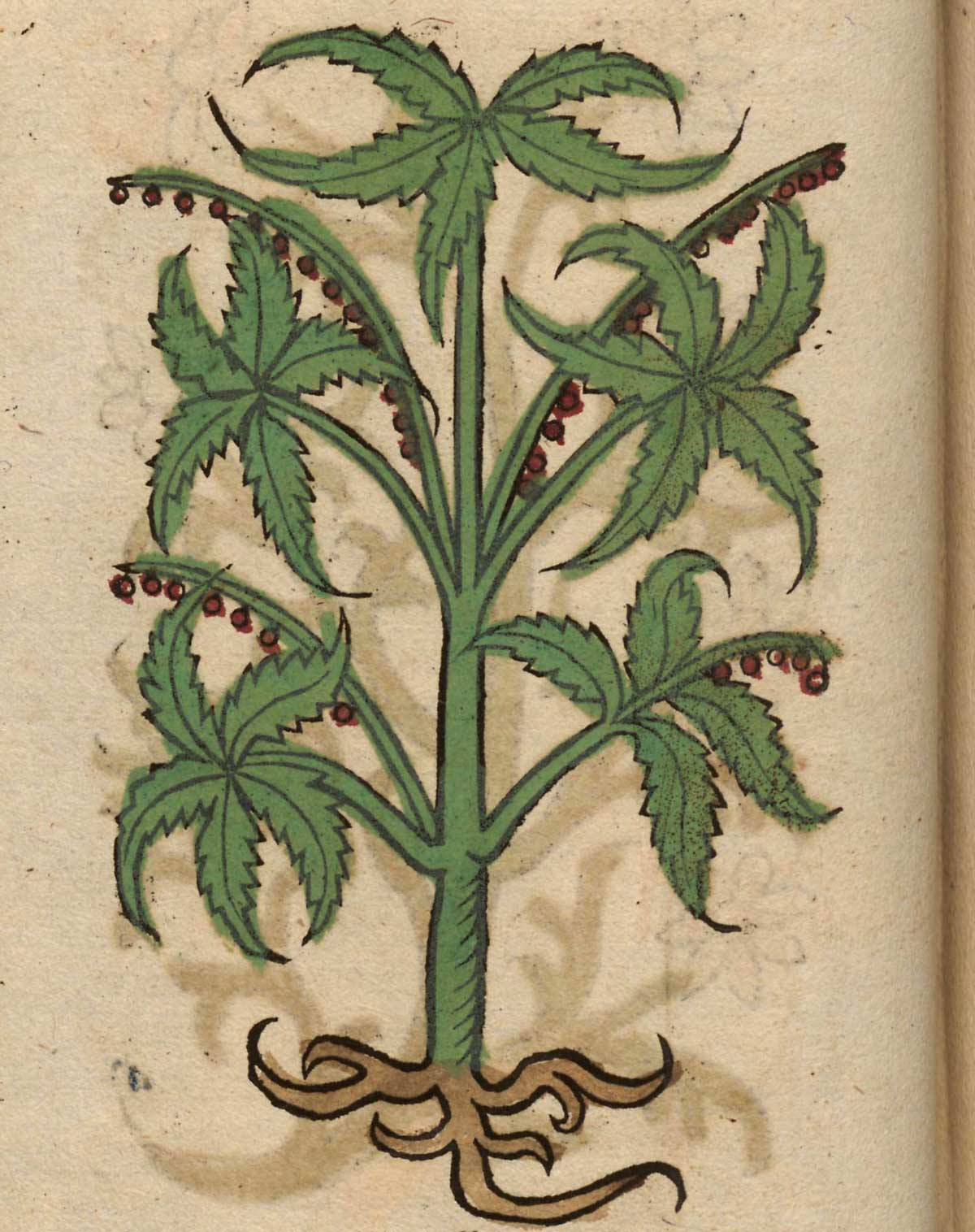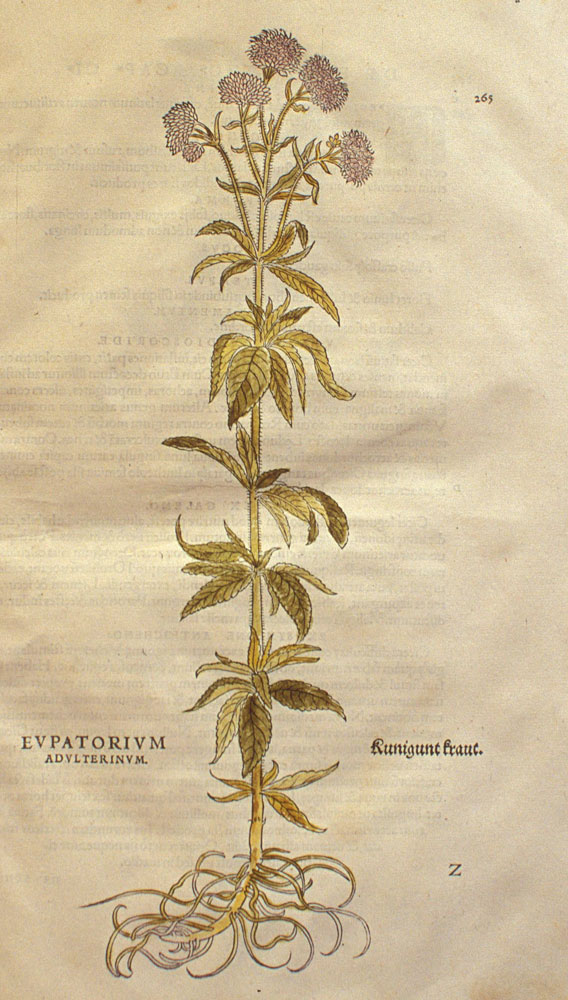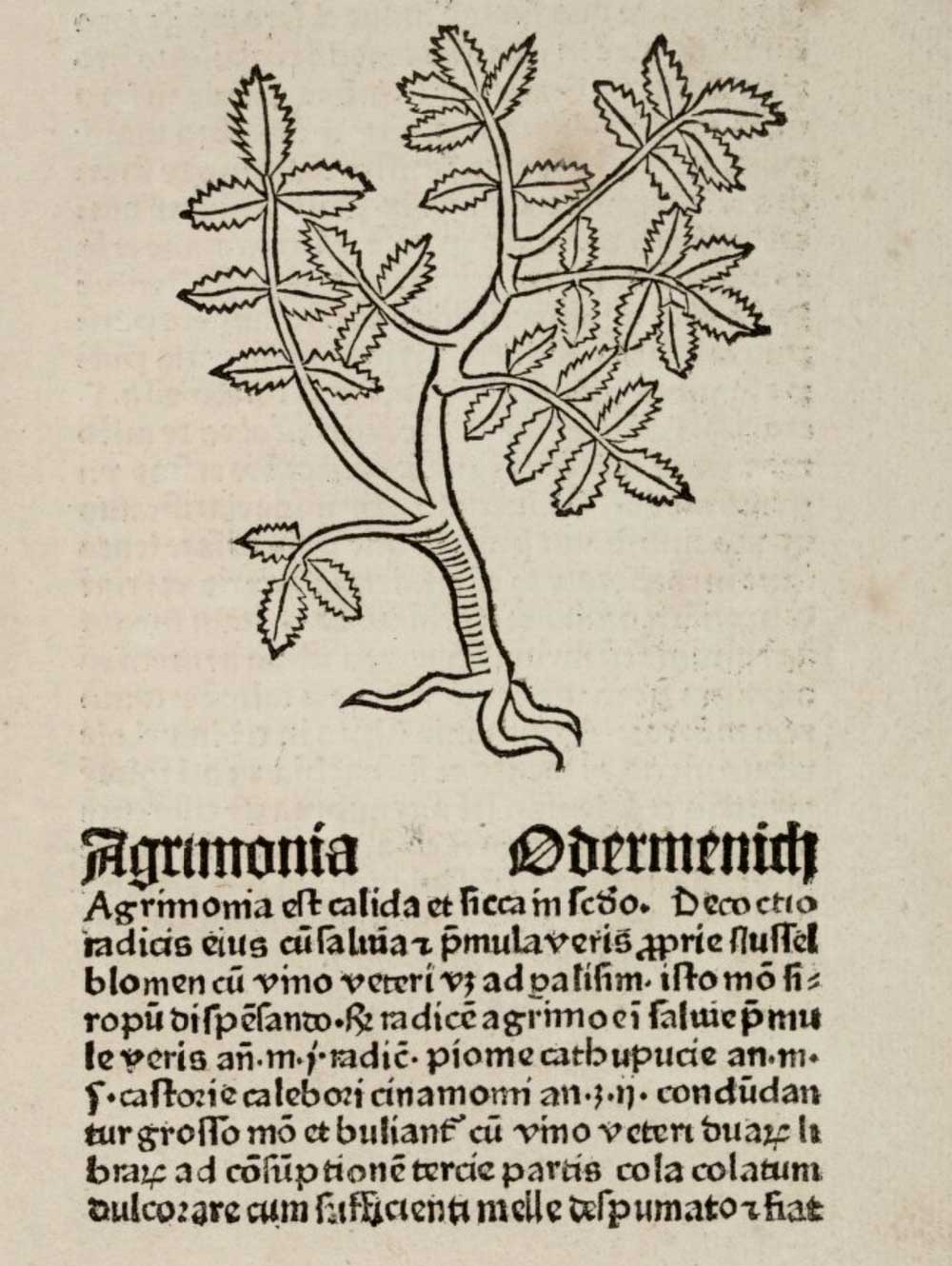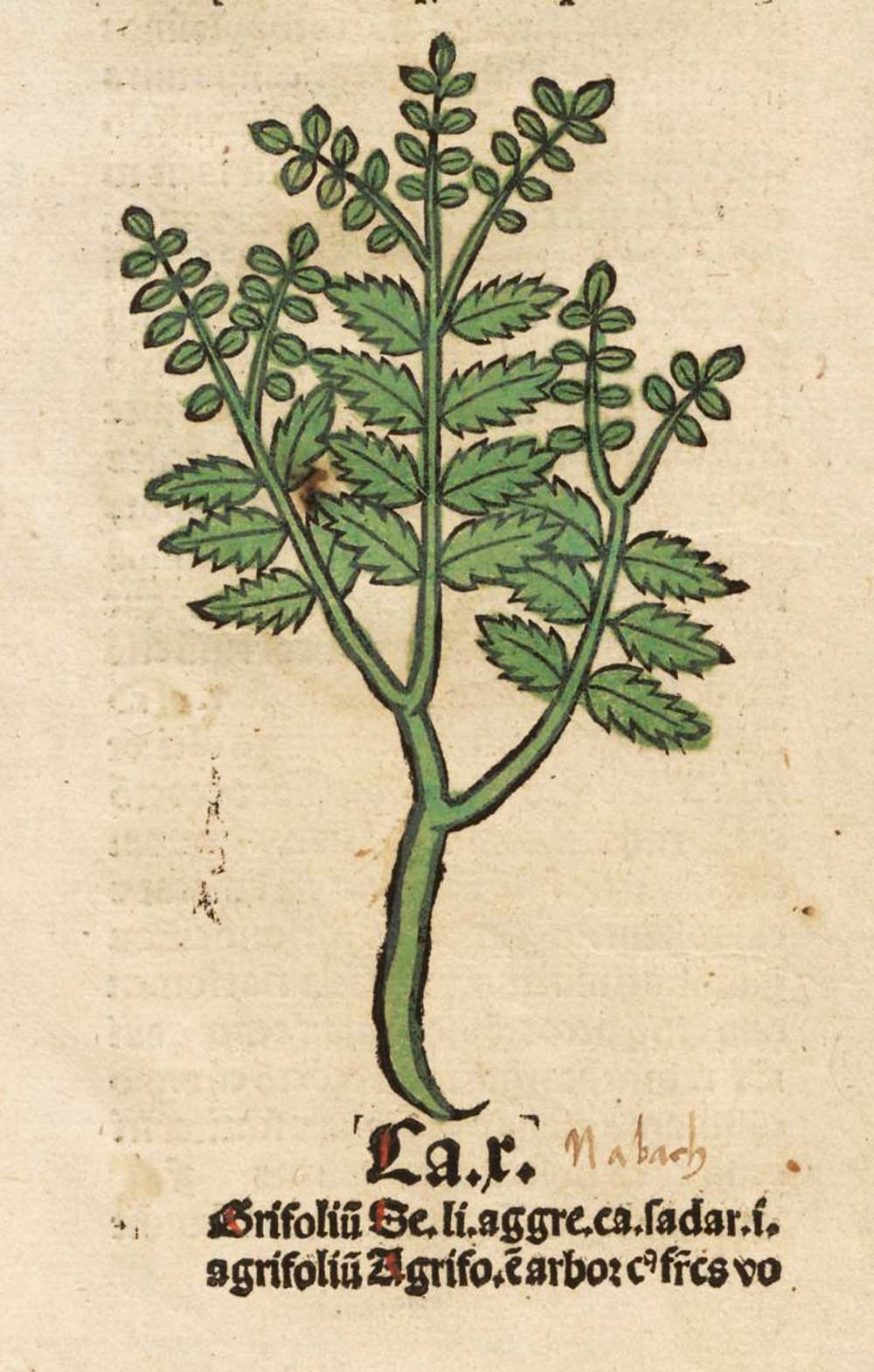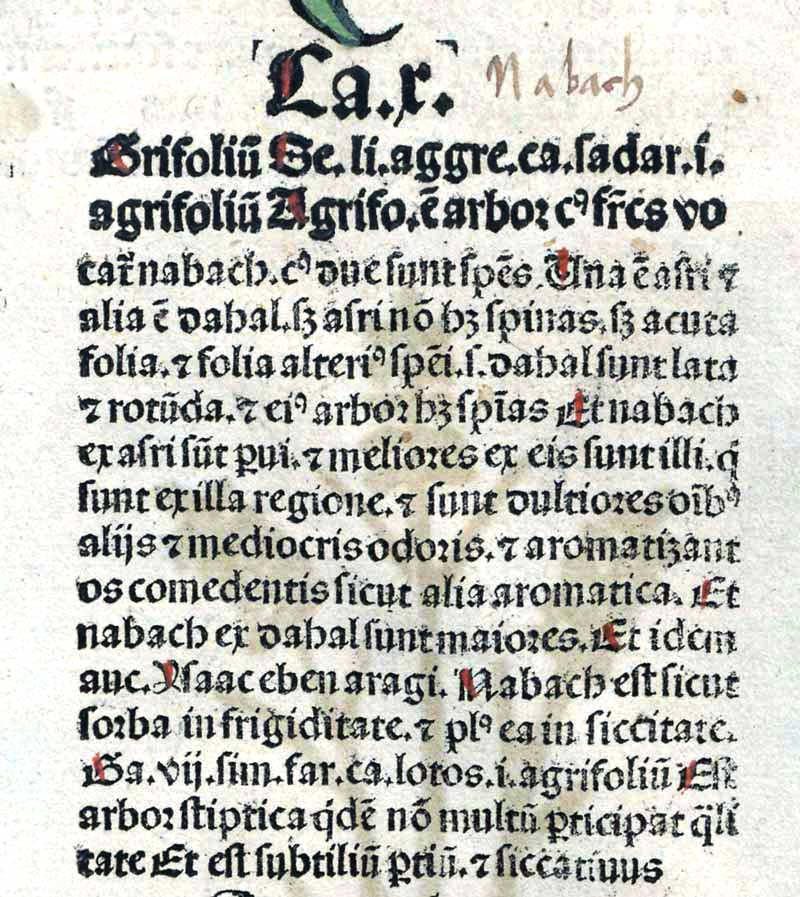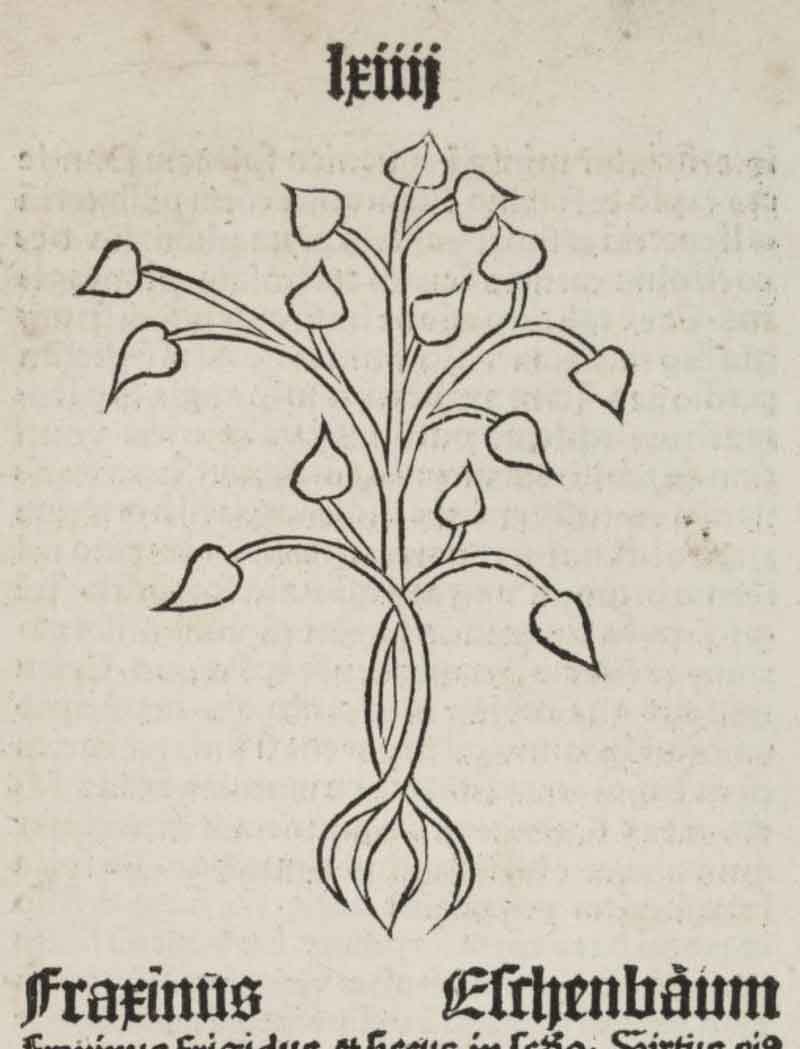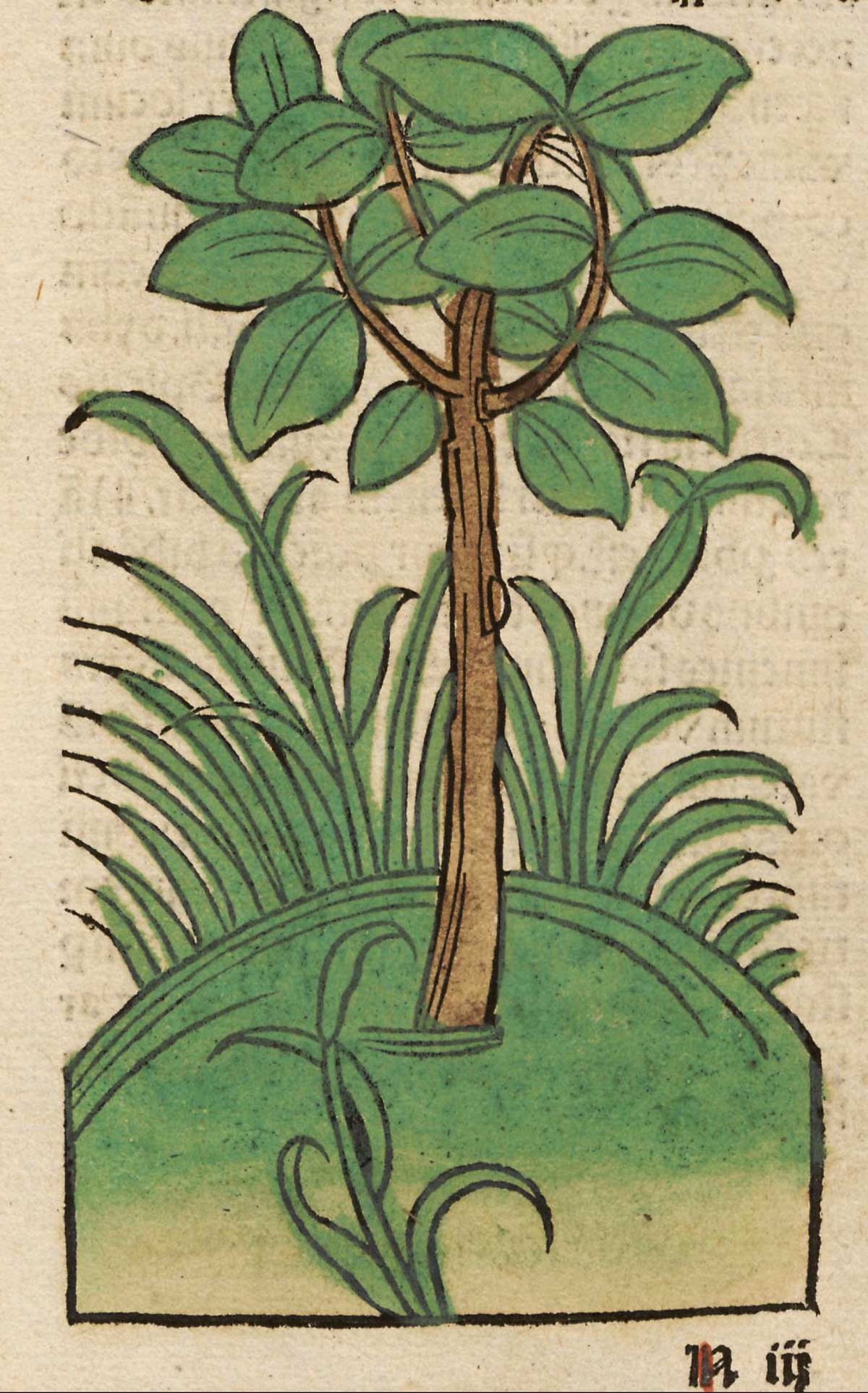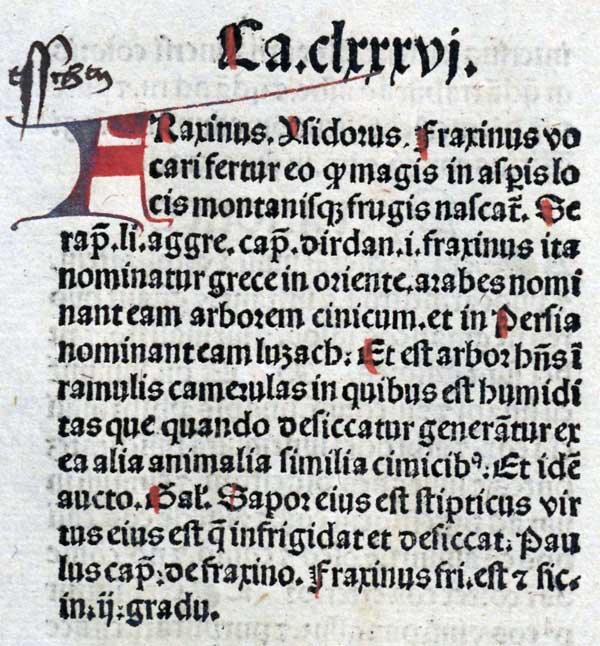extinguishes in man the generative semen,
Original French: eſtainƈt en l’homme la ſemence generatiue,
Modern French: estainct en l’homme la semence generative,
Notes
extinguishes the semen
Cannabis in silvis primum nata est, nigrior foliis et asperior. semen eius extinguere genituram dicitur. sucus ex eo vermiculos aurium et quodcumque animal intraverit eicit, sed cum dolore capitis, tantaque vis ei est ut aquae infusus coagulare eam dicatur. et ideo iumentorum alvo succurrit potus in aqua. radix articulos contractos emollit in aqua cocta, item podagras et similes impetus. ambustis cruda inlinitur, sed saepius mutatur priusquam arescat.
Hemp at first grew in woods, with a darker and rougher leaf. Its seed is said to make the genitals impotent. The juice from it drives out of the ears the worms and any other creature that has entered them, but at the cost of a headache; so potent is its nature that when poured into water it is said to make it coagulate. And so, drunk in their water, it regulates the bowels of beasts of burden. The root boiled in water eases cramped joints, gout too and similar violent pains [Cf. § 228 and note on XXII. § 122]. It is applied raw to burns, but is often changed before it gets dry.
Cannabis
Dioscorides 3.165 Kannabis Emeros. Cannabis [some call it Cannabium, some Schoenostrophon, some Asterion, ye Romans Cannabis] is a plant of much use in this life for ye twistings of very strong ropes, it bears leaves like to the Ash, of a bad scent, long stalks, empty, a round seed, which being eaten of much doth quench geniture, but being juiced when it is green is good for the pains of the ears.
semence
Semence: Seed; also, seeding or sowing time; also, a sowing of seed; aso, the seed, sperme, or nature of man or beast; and hence, the originall, beginning, chiefe root, principall author, of a thing.
Telle semence telle moiflon: Proverbial, Looke how you sow so shall you reape.
La Semence generative
La Semence generative] Voiez Pline, l. 20 chap 23
Procreative, &c.
See Pliny l. 20 c. 24.
but in man destroys the procreative germs
“Semen ejus exstinguere genituram virorum dicitur” (Pliny N.H. xx. 23 ch 97).
Chapter 31. How Rondibilis the Physician counselleth Panurge
[re. Hempseed]
Chapter 31. How Rondibilis the Physician counselleth Panurge
I find in our faculty of Medicine — and we have taken it from the Determination of the ancient Platonics — that carnal Concupiscence is restrained by five means.
By wine…
Secondly, by certain drugs and plants. which make a man chilled, bewitched, and impotent for generation. We have experience of it in Nymphea [25.7.37], Heraclea, Willow of Ameria [24.9.37], Hemp-seed [20.23.97], Honey-suckle [27.12.94], Tamarisk [24.9.41], Agnus-castus[24.9.38], Mandrake [24.13.94], Hemlock [25.13.95], the small Orchis [26.10.62; HP 9.18.3], the Skin of Hippopotamus [28.8.31], and others, which, received within the human Body, by their elementary Virtues as well as by their specific Properties, freeze and mortify the prolific Germ, or dissipate the Spirits which ought to conduct it to the Places destined for it by Nature, or obstruct the Passages and Conduits, by which it might have been ejected…
[notes from Pliny]
estainct en l’homme la semence generative
Le chanvre indien (Cannabis sativa, L. var. indica) est un antispasmodique encore prescrit contre le satyriasis : « Semen ejus extinguere genituram vivorum dicitur. » Pline, XX, 97. — Que la semence du chanvre soit antiaphrodisiaque, c’est l’opinion de Dioscoride, de Pline, de Galien, d’Oribase, d’Aétius, de Paul d’Egine. Cependant, Galien observe, d’autre part (De alim. facult., L I, ch. 34), que d’aucuns croquent le grain de chanvre, grillé avec d’autres desserts, pour s’exciter à la volupté. C’etait encore, au XVIIe siècle, une opinion courante chez les Persans, au rapport d’Œlschlœger, et il y a moins de 50 ans, d’après Mattia di Martino, les paysans siciliens employaient le chanvre comme talisman amoureux. Cf. A. Garrigues, Où l’on voit un oubli de Rabelais conduire à une erreur thérapeutique, Vox Medica, no 4, 20 septembre 1928, p. 8-11. (Paul Delaunay)
estainct en l’homme la semence generative
Pline XX, 97.
estaince la semence generative
Pline, XX, 23, écrit du chanvre: «On dit que sa graine fait entierement perdre le sperme aux hommes» (trad. Du Pinet).
